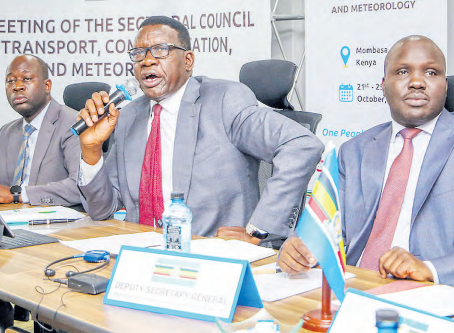

East Africa Community must eliminate all physical and non-physical barriers to transportation to boost cross-border trade and economic growth in the region, a regional consultative forum was told yesterday.
Transport Cabinet Secretary Davis Chirchir said transport facilitates movement of people, goods, services and resources, and improves access to local and international markets.
“In this digital age, communication is the bridge that connects us all, transcending the geographical boundaries,” the CS said.
He spoke during the Ministerial Session of the 19th EAC Sectoral Council on Transport, Communications and Meteorology in Mombasa.
He said removing physical and non-physical barriers to effective transportation would directly impact the economic and social development of EAC countries.
“Transport, communication and meteorology: These sectors are the key drivers of our economies, the channels through which the heart of trade, information, and services flow, connecting our nations and our people,” Chirchir added.
Meteorology plays a critical role in anticipating and mitigating the impact of climate change and natural disasters, which contribute hugely towards destruction of infrastructure critical for the economic growth of any country.
He said it is through effective communication systems that the EAC can share knowledge, foster innovation and build a cohesive community.
The CS added that accurate and timely meteorological data are essential for planning and protecting infrastructure, agriculture, and communities.
“Consequently, let us use this forum to strengthen our meteorological cooperation and build resilience against the challenges posed by climate change.”
Chirchir reaffirmed Kenya’s commitment to developing and maintaining relevant and robust infrastructure, laws and regulations, that enable effective communication, mitigate climate change, foster trade and facilitate seamless movement across EAC borders.
Andrea Malueth, who is the EAC deputy secretary general in charge of Infrastructure, productive, social and political sectors, said there is need to invest more in infrastructure development along the Northern and Central Transport Corridors to facilitate people’s movement.
Malueth added that the investment would enhance intra-regional trade, which is still low at 15 per cent. “Intra-regional trade in Europe, Asia and Latin America ranges at over 60 per cent.
Intra-regional trade can promote economic integration and development within a regional economic community, as well as increase trade flows and reduce dependence on external markets,” Malueth said.
Partner states are pushing on with projects to actualise the East African Railways Network connected through the Standard Gauge Railway.
“A total of 1,120km of SGR is operational in Kenya and Tanzania. A further 1,100km is undergoing construction in Tanzania and about 4,000km is under project preparation in all partner states,” he said.
“The EAC will harmonise the standards to ensure seamless operations across the regional network.”
To achieve seamless connectivity of the railway system, he added, synergy must be built in joint resource mobilisation to ensure there are no gaps that would render the programme ineffective.
For East Africa to cope with climate change and improve the safety of air transport, the deputy secretary general said it must equip itself with automatic weather stations and adopt quality management systems for Aeronautical Meteorological Services.
“So far, five radar stations and over
30 automatic weather stations have
been added to the regional network,”
he said.




